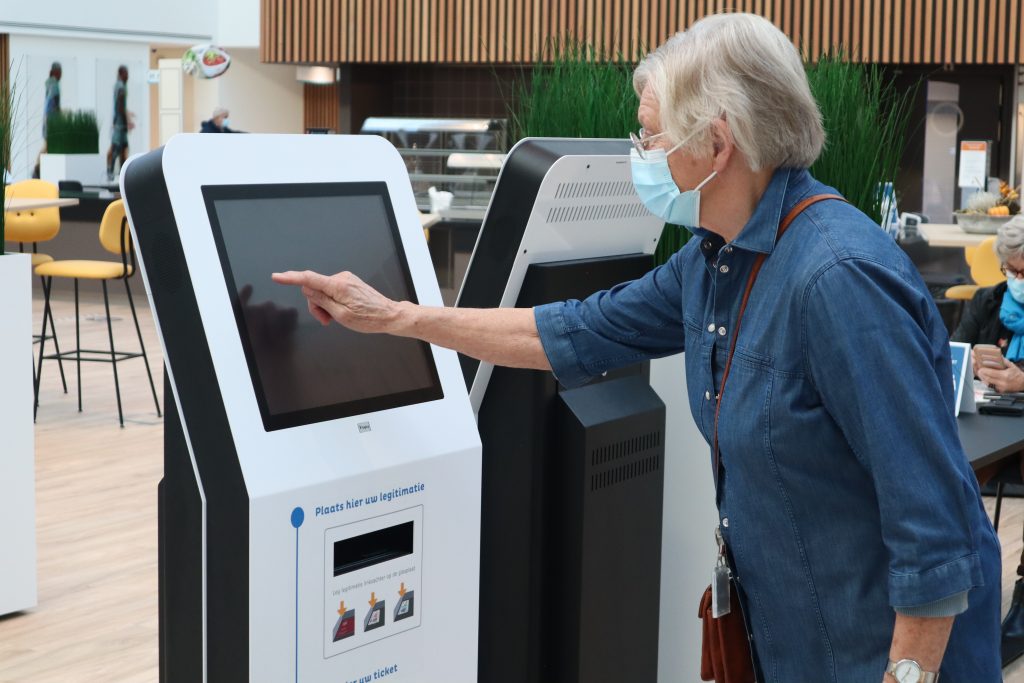If we look at the entire patient journey, there are certain things the patient can arrange himself. This already starts at home on the couch when making an appointment. If we zoom in on this journey, we see that various stakeholders – in the form of organizations, departments or individuals – are involved in the processes of each individual patient journey. Not only the patient determines the course of his or her journey, but also external parties can influence this. These stakeholders are:
Patient
Has a question and comes to discuss an examination, treatment or surgery by a healthcare provider.
Supervisor
In the case of children or elderly, there is often a supervisor. This is usually the person who makes the appointment and/or provides organizational support.
Healthcare institution
This is the organization where the patient asks his care request. The following stakeholders are involved within these institutions:
-
- Front desk
- Facilities (facility management)
- Hospital planner
- IT department
- Finance
Doctor
The attending physician. This can vary from the GP who makes the referral to the specialist. The (doctors) assistants, but also the diagnostic laboratory technicians (blood / X-ray) involved.
Health insurer
The party that ultimately pays the patient's invoice is also a party in the total chain. Sometimes the health insurer is also the one who can play a coordinating role in the journey between the various institutions between which the patient moves.
IT specialists
This also includes the suppliers involved who automate the entire process, such as the following distinguishable players:
-
- IT-department
- EPD - software (e.g. Chipsoft, SAP, Nexus)
- Patient Flow software (Logis.P)
- Patientportals (Funatic, Topicus, Chipsoft)
- Videosoftware (Weseedo, MSTeams, Beterdichtbij)
External partners and other circumstances
External circumstances can play a major role in the patient journey. Think of traffic, parking, other patients and passers-by.
The quality of the total patient journey ultimately depends on the cooperation between all those involved in this entire process. Who takes the lead in this? Who informs whom and when and who informs the patient? What trends are there? The different stakeholders do not always work together or have the same interests. As a result, there is a chance that the patient journey will not proceed optimally and nuisance will be experienced. This is possible during the visit or even before, when making an appointment.
Our approach
n order to at least align the internal stakeholders, we will work with interested healthcare institutions in phases. The first step therefore consists of an introduction and a preliminary interview. We do this together with the initiator and/or project leader. In this we coordinate what the most important wishes and objectives of the organization and the individual stakeholders are.
Na het afstemmen van de wensen volgt een sessie van ca. 2,5 uur. Hierin laten wij de verschillende scenario’s, mogelijkheden en toegevoegde waarde van de diverse functionaliteiten laten zien. Deze sessie houden wij voor een brede delegatie van de organisatie.
Integration is key
The patient or visitor’s visit to a hospital, institution or business starts at home, when making an appointment, and ends when they return home. By implementingour solutions, you can be sure that the patient or visitor is guided to and through the institution in the correct (and for the healthcare institution, the most efficient) way. The patient is also provided with the correct information. The underlying administrative process is simplified by technology. This includes data exchange with EPD/HIS, radiology and laboratory systems, narrowcasting, portals and apps. That way you can be sure that you can work flawlessly. Integrations and data exchange between the various systems and platforms are also extensively discussed in this session.
Techniek, proces, implementatie
Spreekt onze oplossing aan, dan wisselen we in een derde workshop met de belangrijkste stakeholders graag inhoudelijke informatie uit over onder andere de techniek (zoals ICT-infrastructuur/koppelingen), het proces (zoals concept en inrichting, businesscase, terugverdientijd) en de implementatie (zoals aanpak, werkwijze, benodigde resources). Het doel van de informatie workshop is tweeledig; de organisatie wordt geïnformeerd over de impact van het project en kan zich daardoor beter voorbereiden. Anderzijds biedt het ons goed inzicht om een gerichte aanpak op te stellen om het project succesvol te kunnen uitvoeren. Ervaring leert dat de klant op deze wijze een betere beslissing kan nemen en verloopt de implementatie vele malen soepeler en sneller.
Wilt u meer weten over Logis.P en onze mogelijkheden? Kijk dan hier of neem contact met ons op via het contactformulier.





